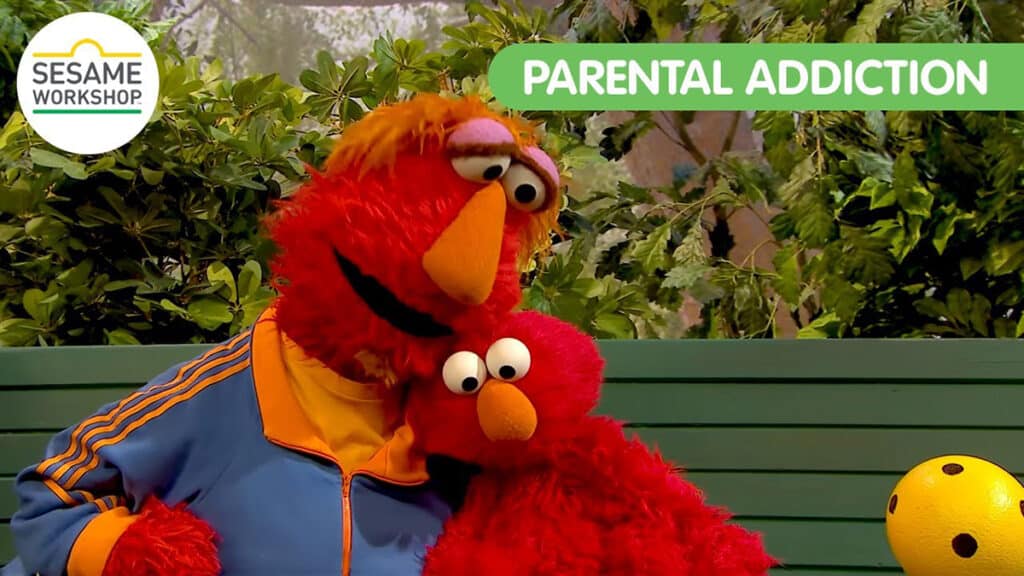Volcanoes are erupting in The Philippines, but on-fire Australia received some welcome rain. The Iran war cries have been called off and The Donald’s military powers are about to be hamstrung by the Senate. Meanwhile, his impeachment trial is starting, and we’re all on Twitter for a front-row seat.
What Could Go Right? A new sickle cell treatment
May last a lifetime. It’s also the world’s first gene therapy for the disease.
This is our weekly newsletter, What Could Go Right? Sign up here to receive it in your inbox every Thursday at 5am ET. You can read past issues here.
A new sickle cell treatment
Last Friday, The Food and Drug Administration (FDA) approved two gene therapies—one by Bluebird Bio, the other by Vertex Pharmaceuticals—for sickle cell disease. The Vertex one, called exa-cel, is also the first approved therapy in the United States that uses the gene editing tool CRISPR.
The US isn’t the first to take the plunge on Vertex. Britain gave it the world’s first approval in November, followed by Bahrain earlier this month.
While exa-cel is not a cure, as NPR reports, the hope is that it “will be a one-time treatment that will alleviate symptoms for a lifetime.”
The backstory: Sickle cell disease is caused by a genetic mutation that prevents the production of a protein called hemoglobin, which carries oxygen throughout the body in our red blood cells. Without hemoglobin, the cells become “sickled,” like a crescent moon. These crescent-shaped cells don’t move well, blocking blood flow, and die too early, leaving the body essentially starving for oxygen.
As a result, sickle cell disease causes fatigue, debilitating pain, stroke, infections, and even organ damage or failure. It affects an estimated 100,000 Americans and 20 million people worldwide, of which over 75 percent live in Africa. Scientists believe that the mutation developed as a protective mechanism against severe malaria.
Since it is inherited, sickle cell patients are commonly of African, Hispanic, Southern European, Middle Eastern, or Indian heritage. In the US, over 90 percent are black Americans.
The current treatment options: In the early 1970s, the average lifespan of someone with sickle cell “was only 14 years,” according to the National Institutes of Health. These days people can live into their forties and fifties, although those with the severe form of the disease can struggle to live a functional life.
For a time, sickle cell screening was mandatory only for black Americans, which led to the passage of state-level laws that allowed the denial of employment, insurance coverage, and other opportunities to anyone with the sickle cell trait—not the disease, but its genetic marker. In 1972, Congress passed the Sickle Cell Anemia Control Act, which set aside federal funding for research and other programs, with the caveat that screening must be voluntary. (As of 1987, it was recommended that screening be required and provided for all newborns in all states. As of 2006, this was finally the case.)
More devoted focus on the disease led to research discoveries and treatment advancements in the 80s, 90s, and early millennium. Some of these are specifically for sickle cell disease, while others aid sickle-cell caused complications.
For example, many more kids now survive beyond their toddler years thanks to a 2000 vaccine that inoculates against pneumococcal disease, which children with sickle cell are susceptible to. (Sickle cell-related death among black children younger than four fell by 42 percent from 1999 through 2002, says the Center for Disease Control.)
Blood transfusions and hydroxyurea therapy are the main treatment options for sickle cell. The only cure is a bone marrow transplant, but many people are not eligible for one or don’t have a donor who is a close enough genetic match. Transplants are mostly performed on children.
How exa-cel works: All babies, even those who will develop sickle cell disease, are born with working fetal hemoglobin. “It’s the adult form that’s defective,” explains The Associated Press. The CRISPR-based therapy works like this: bone marrow stem cells are collected from the patient. CRISPR cuts out a piece of DNA, which allows the gene that produces fetal hemoglobin to turn back on. These new stem cells are reinjected into the patient.
It’s not a pleasant process, requiring many hospital visits as well as chemotherapy to ready the body for reinjection. But the treatment worked for 29 of 31 patients in Vertex’s clinical trial, with zero pain episodes over the ensuing year. One of the patients in the trial, Jimi Olaghere, wrote that since the treatment, he has “escaped from the clutch of fear that comes from thinking every occasion could be my last.”
The risk and the reward: CRISPR can accidentally cut parts of DNA it wasn’t meant to, resulting in “off-target edits.” The risk these pose were the focus of the FDA meeting prior to exa-cel’s approval last week. Even when they occur, off-target edits could be harmless, if they are in the 98 percent of our DNA that doesn’t encode proteins. But they could also be harmful, if they are in the other two percent.
Per notes from the meeting done by BioPharma Dive, Vertex claims “their work shows no detectable off-target editing.” They performed off-target analysis on only three people, a choice some FDA advisors in the meeting questioned. No hard guidelines yet exist for what qualifies as an appropriate analysis for off-target edits, however. Vertex will be tracking general long-term safety via two 15-year studies.
Since the approval went through, the FDA felt that the potential benefit was too big to ignore. “We want to be careful to not let the perfect be the enemy of the good,” FDA advisor Scot Wolfe, whose research programs at the University of Massachusetts focus on gene editing technologies, said at the meeting. “You want to do as good a job as you possibly can, but at some point, you have to try things in patients. I think in this case, there is a huge unmet need.”
The downside: The treatment will be expensive. In-the-millions expensive, although The New York Times reports that Medicaid and private insurers have “suggested a willingness to pay” to Vertex, as they do for gene therapies for other diseases.
For both men and women, since chemotherapy is part of the process, it leaves them with a high chance of becoming infertile (as does a bone marrow transplant). While Vertex’s trial included access to sperm banking and egg freezing in order to preserve patients’ options, whether that would be available for future patients will depend on their individual insurance plans.
The upside: Sickle cell is yet another disease that hasn’t been given the benefit of enough attention; the data around it is still not robust. It’s commonly pointed out that cystic fibrosis, which affects a third fewer Americans, receives 10 times the research funding as sickle cell. There are almost 10 times the number of treatment centers for it, too.
So any progress to meet the “huge unmet need” both in the US and in low-income countries is a win in my book, even if it’s unlikely gene therapies are going to be broadly available in Africa—or the US—anytime soon. These things take time. Research on gene editing began in the 90s. The FDA approved its first gene therapy in 2017, and has greenlit 14 others since then. Only more will come in the future.
You have told us that you’re frustrated by hitting paywalls and are overwhelmed by the number of links included in our weekly roundup. Starting in the new year, we will be experimenting with new formats to make the reader experience better. Have feedback? Tell us in the comments so we can incorporate it!
Quick hits
- Polio is endemic in only two countries: Afghanistan and Pakistan. After years of resisting vaccination efforts in the former, the Taliban has done an about-face and is now endorsing them. “It’s a priority for us,” the Taliban’s spokesman told The Washington Post. They say that their former skepticism didn’t have to do with the vaccines themselves, but a fake hepatitis vaccination program the CIA ran in Pakistan during the time they were tracking Osama bin Laden.
- It’s difficult to find fentanyl coming over the border through manual searches since even a deadly dose of it is tiny. US Border Patrol is now implementing AI to deepen their knowledge of fentanyl supply chains, leading to seizures of fentanyl-creating chemicals.
Below in the links section, transparent wood, stay-at-home dads, HIV-fighting vaginal rings, and more.
By the Numbers
A pop-up section in which we celebrate numbers that represent substantial improvement in people’s lives
2.93%: The multidimensional poverty rate Vietnam expects to have by the end of 2023
2025: The year Vietnam plans to hit their poverty rate goal of .9 percent
Source: VietnamPlus

What Could Go Right? S5 E10

How have gender politics shaped the role of women in our society? How far are we from equality, or are we there? And how has history informed our modern conversations on women’s rights? In her latest book, Betty Friedan: Magnificent Disrupter, renowned essayist, writer, and critic Rachet Shteir presents a compelling biography of the woman behind the 1963 bestseller The Feminine Mystique, which first popularized the idea of women’s fulfillment outside the identities of wife, mother, and homemaker. | Listen to the episode
Progress, Please
(Found good news? Tweet at us @progressntwrk or email.)
Other good stuff in the news 🚌
Energy & Environment:
- Australian EV sales have increased by 185% since 2022 | The Guardian
- 5 cities leading the charge toward electric bus transportation | EcoWatch
- How China’s buses shaped the world’s EV revolution | BBC
- Hybrid cars are having a moment amid electric car skepticism | Axios
- WTF is going on with the climate? | The Climate Brink
Public Health:
- A vaginal ring that discreetly delivers anti-HIV drugs will reach more women | NPR
Science & Tech:
- Drug prevents fentanyl overdose for a month in monkeys | New Scientist
- Forecast warns when sea life will get tangled in nets—one year in advance | Nature
- Why scientists are making transparent wood | Knowable Magazine
- This company can convert your fuel car into an EV—in just a day | Interesting Engineering
Politics & Policy:
- High-speed rail gets a multibillion-dollar White House boost | Axios
- PM says Greeks abroad will be able to vote by mail in European elections | Kathimerini
- Greece and Turkey, long at odds, vow to work together peacefully | The New York Times
- Historic ruling in Ecuador returns ownership of ancestral land to the Siekopai people | El País
Society & Culture:
- More dads are choosing to stay home with their kids. Here’s why. | The Hill
Economy:
- Labor’s very good year | The New York Times
- November jobs report shows US labor market is flourishing | Axios
TPN Member originals 🧠
(Who are our Members? Get to know them.)
- In search of ‘civicians’—the team parents of a healthy democracy | Theodore R. Johnson
- How can men take charge of their lives? | Scott Galloway
- Harness the power of suggestion for your happiness | Arthur C. Brooks
- Escape the social media matrix | Robert Wright
- We’ve lost our way on campus. Here’s how we can find our way back. | Danielle Allen
- The universities that don’t understand academic freedom | Yascha Mounk
- Philip Pettit on what it means to be free | Yascha Mounk
- 10 thoughts on what is happening in Israel | Isaac Saul
Department of Ideas 💡
(A staff recommendation guaranteed to give your brain some food for thought.)
Nostalgia can be an engine of progress | Discourse
The journey to the past that nostalgia takes us on is really about the present and the future.
Why we picked it: I’m not a doomer. But I can relate to those who have a distaste for many aspects of the modern world and concerns about where our advancements are taking us, not to mention where they’ve already taken us. So any writing that even remotely suggests looking to the past for inspiration on better ways to look to the future is ink well-spilled in my book. —Brian Leli
Until Next Time
Have you told Santa which Amazon URLs you’d like for Christmas yet? 📝🎄



[…] therapy, Casgevy, is a remedy for the blood illnesses sickle cell and beta thalassaemia. It really works by snipping out sure problematic genes—and it […]
[…] remedy, Casgevy, is a therapy for the blood diseases sickle cell and beta thalassaemia. It really works by snipping out sure problematic genes—and it […]